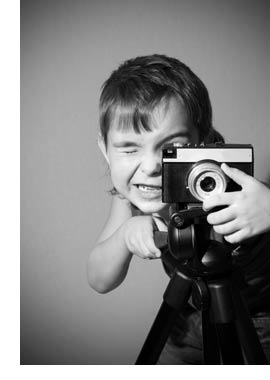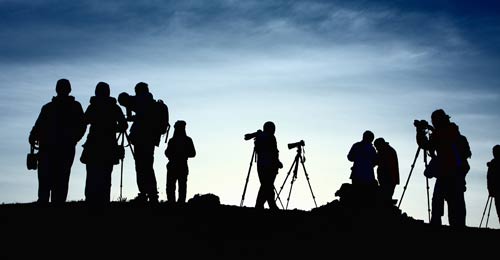Beginners Purchase #1
 Until you migrate to using expensive strobe lights, a tripod is, to be honest, a must have for any stock photographer. An absolute must have, perhaps only rivalled by a good camera bag if you do lots of travelling work outdoors. If you already have a tripod see below for some beginners tripod ideas and tips.
Until you migrate to using expensive strobe lights, a tripod is, to be honest, a must have for any stock photographer. An absolute must have, perhaps only rivalled by a good camera bag if you do lots of travelling work outdoors. If you already have a tripod see below for some beginners tripod ideas and tips.
For a beginner it's tempting to use 'night shot mode' or make the ISO more sensitive, don't. The image produced will be noisy or distorted with artefacts and not accepted on a microstock site. To make things worse microstock agencies reject images with even the slightest blur caused by movement of the camera on a long exposure.
Fix your ISO at its lowest setting (typically 64 or 100) and leave it there whenever you are taking photos you want to sell as stock. Without going into blinding detail (you can read about exposure times on any photography tips website) your exposure speed should be at least 2/lens length. (e.g. for a 50mm lens then that's 2/50 = 0.04 = a 25th of a second) for a zoom lens at 300mm, that's 2/300 = a 150th of a second). If not then you need the tripod to keep the camera steady or the image will blur. Depending on your camera it might have a built in shake warning when operated in 'program mode'; more processional cameras do not include such a warning by default.
I'm not going to spend ages talking about buying the best tripod and features that tripods have. If you don't have one already then go and buy the cheapest one you can find that's what I did all those years back. Use it and learn all the things you don't like about it. You will likely love the fact its light weight (cheap flimsy tripods often are) and hate the way in which you have to un-clip and clip all the legs each time you use it, and after attaching the camera to the top and adjusting it you will see why people pay for expensive ball heads. Buy an upgrade when you can afford one and feel the need, perhaps make it the first thing you buy with your microstock earnings. You will still find that old tripod useful, you can buy adaptors to allow you to fix hotshoe flashgun to a camera mounting and convert it into a useful light stand for an external flash.
Tripod Required
- Taking macro images it's a must, the slightest movement of the camera taking a close up and it will blur. Even the movement of the mirror on a DSLR can blur macro or long lens (zoom) images.
- Taking images indoors with a reasonable depth of field. Table top photos are the bread and butter of stock photography, even if you can hold that camera still you will soon have a sore back without a tripod.
- Images at night, and more importantly those oh-so-popular cityscapes after sunset where the sky is still an attractive deep blue or maroon.
- Long exposures, tripods open up so many more creative possibilities of blurring moving subjects like cars, people in the street, waterfalls, waves, etc. while keeping the background nice and crisp.
- Landscape and scenic images need a deep depth of field and hence a narrower aperture, adding filters further reduces the light making a hand held photo impossible.
- Multiple exposure images. You need to keep the camera still if you want to take double or multiple exposure effects. Even if you merge the images in photoshop afterwards, it's much easier if the original images are perfectly aligned. Examples include group portraits where you can remove people who were blinking in different exposures and sporting subjects with multiple images of an athlete moving across same picture.
- Panoramic photos from multiple images, photoshop can make a pretty good attempt at stitching photos shot hand held, but for best results use a tripod with a spirit level to make sure you panorama has a level horizon and can be easily stitched into one photo.

Tips:
Use the self-timer on the camera so that you are not touching the tripod when the shutter opens, even better is to get a remote release cable that plugs into your camera, or use a remote control if your camera has one. With a DSLR if you can use a 'mirror lock-up' mode at the same time then do so, the movement of the mirror moving inside the camera can vibrate the camera and give a very slight blur to the image.
Prop your tripod against a solid object like a table or fence for even more stability (it's like adding a 4th leg to the tripod). A cheap or lightweight tripod can move around in strong wind. A sheltered location can help or hanging your bag or some weights from the middle of the tripod (some tripods have a hook on the bottom for this)
If you are shooting very long exposures then try not to move around the tripod during the exposure unless it is on a very solid surface. Tiny movements can be transmitted through the ground (this often happens inside a house with 'springy floorboards', where moving in one part of the room moves the floor boards in another part) the effects of tiny movements are magnified when you use a longer (zoom) lens.



It's quiet in here! Add new comment